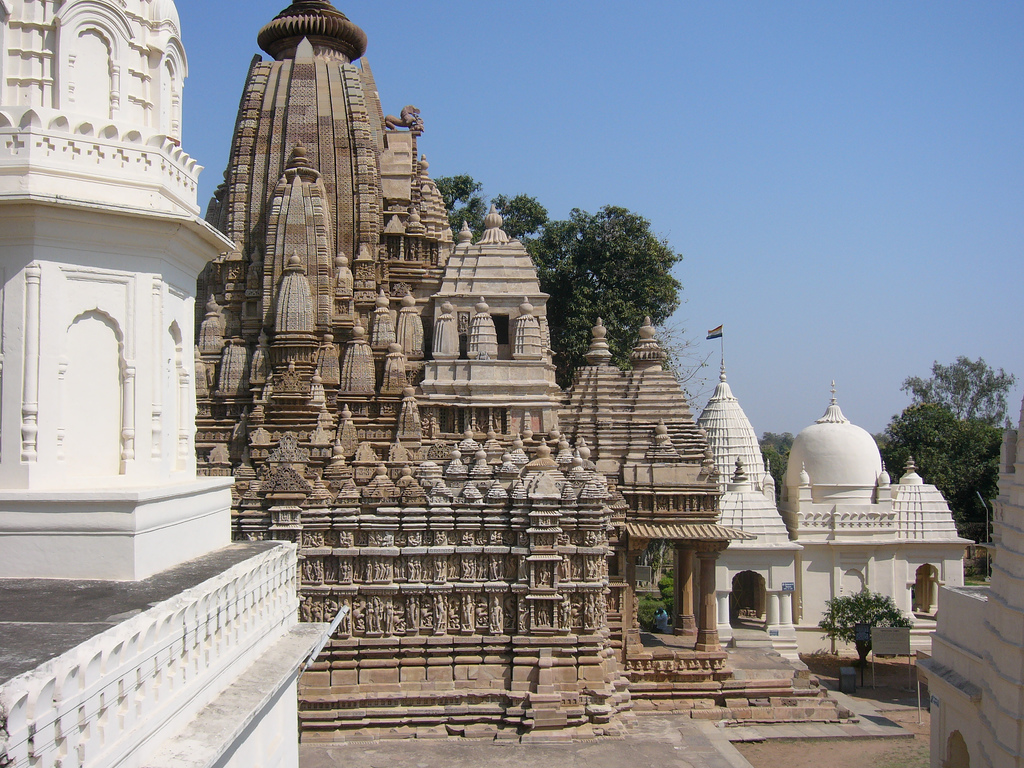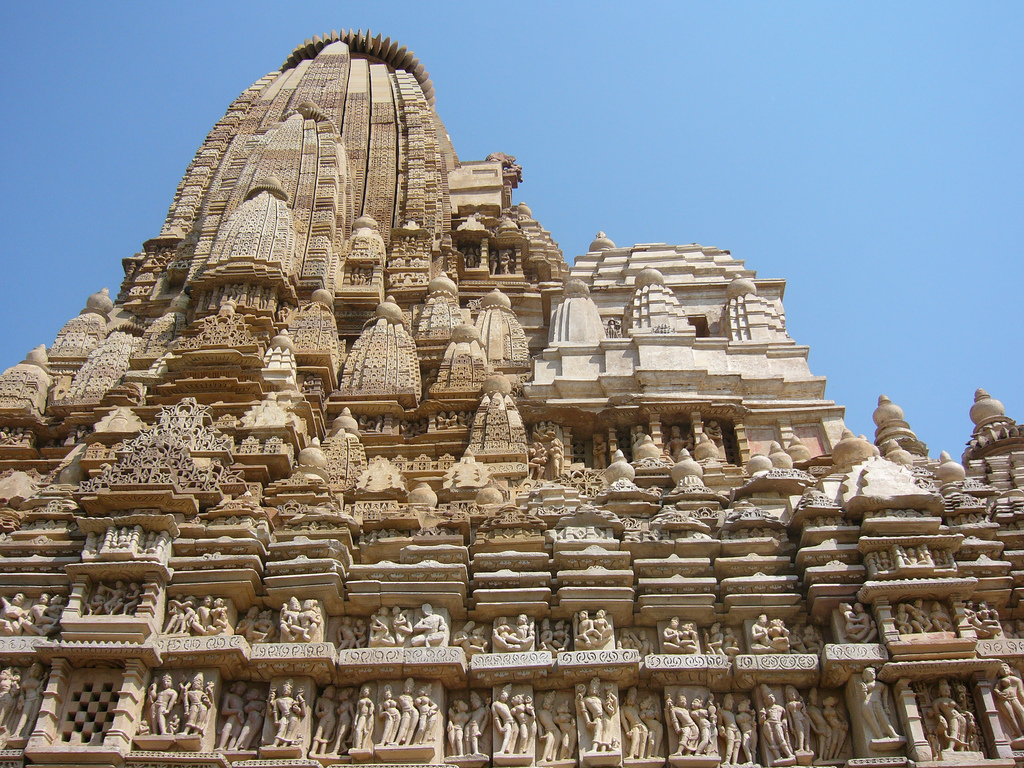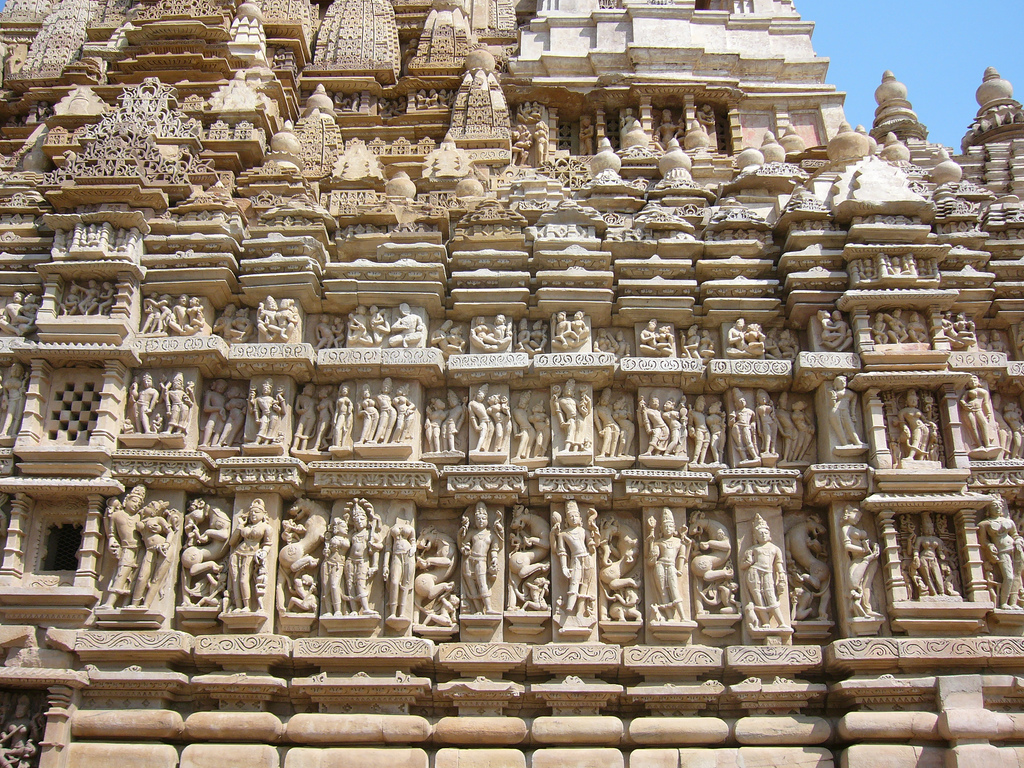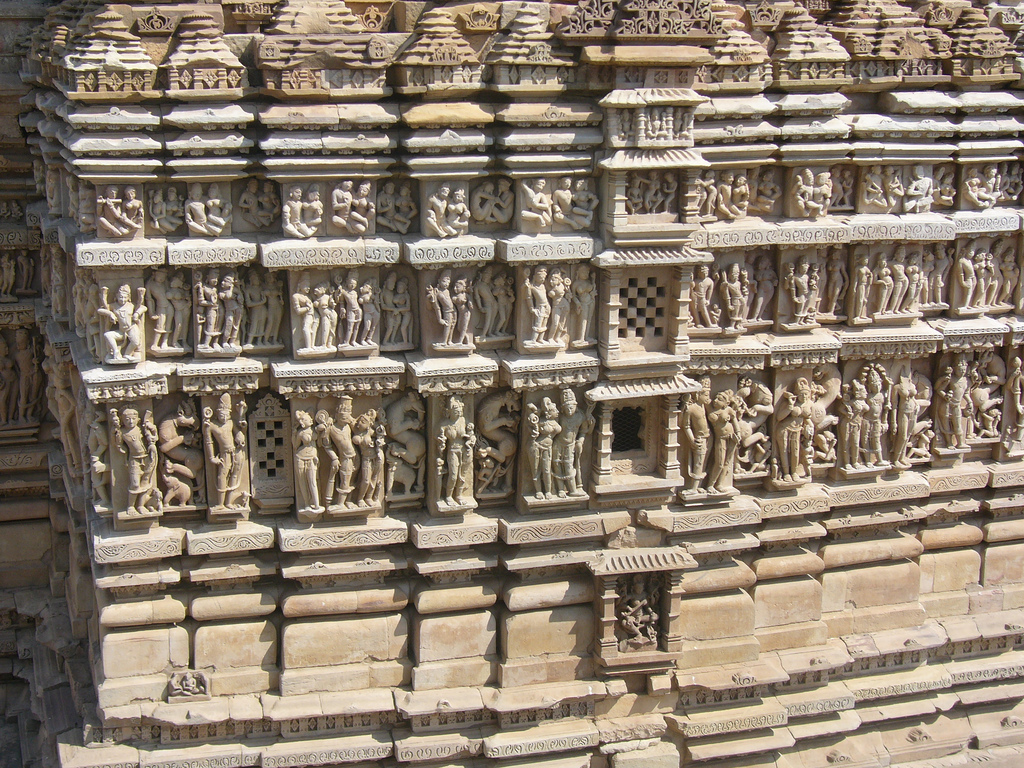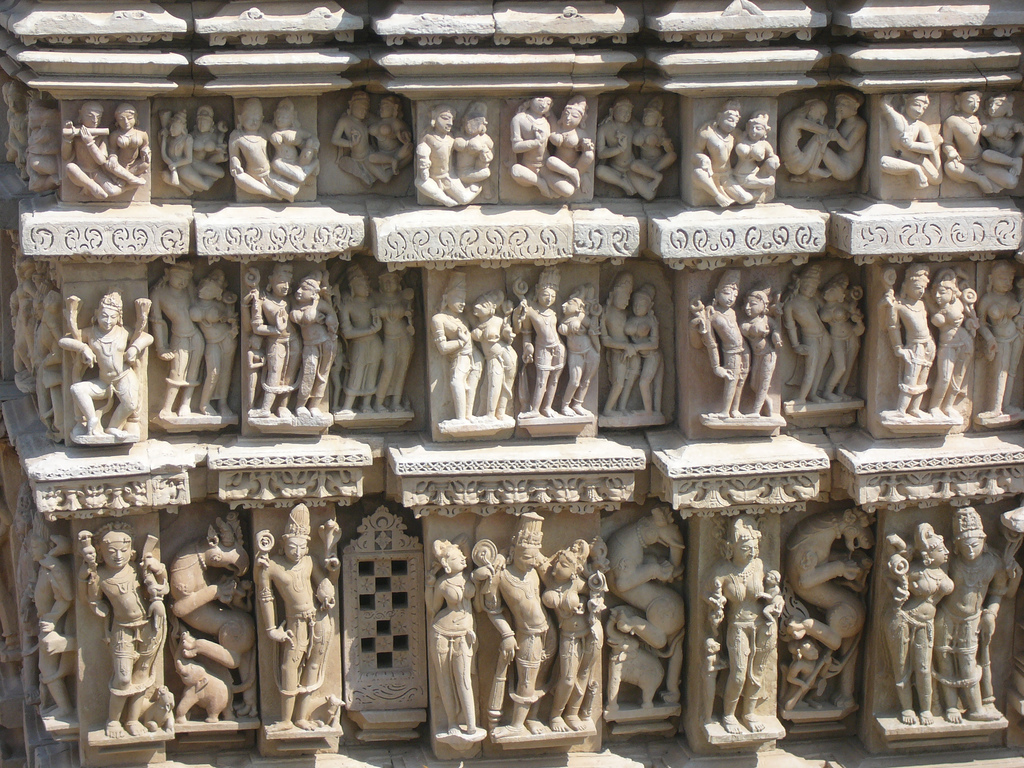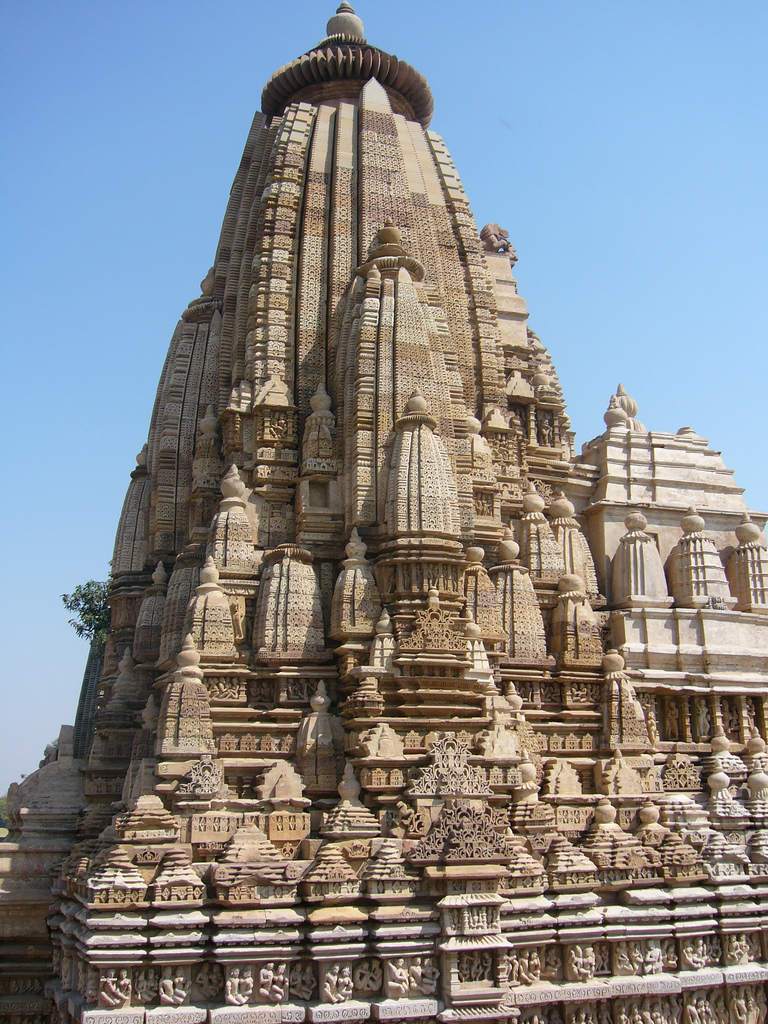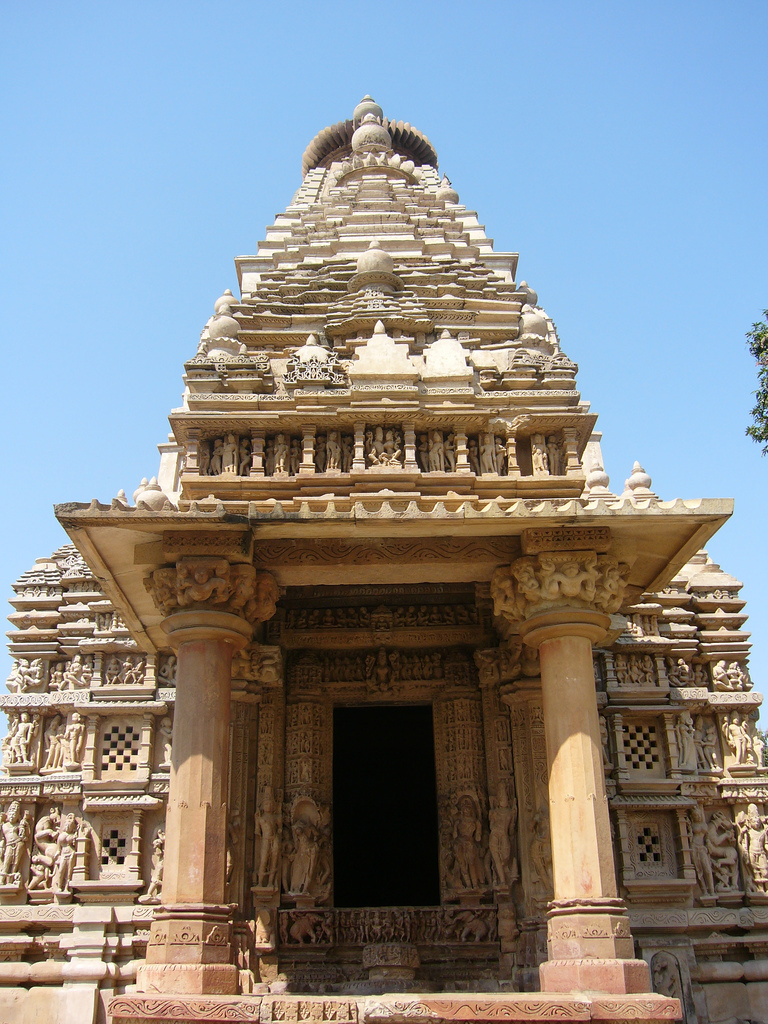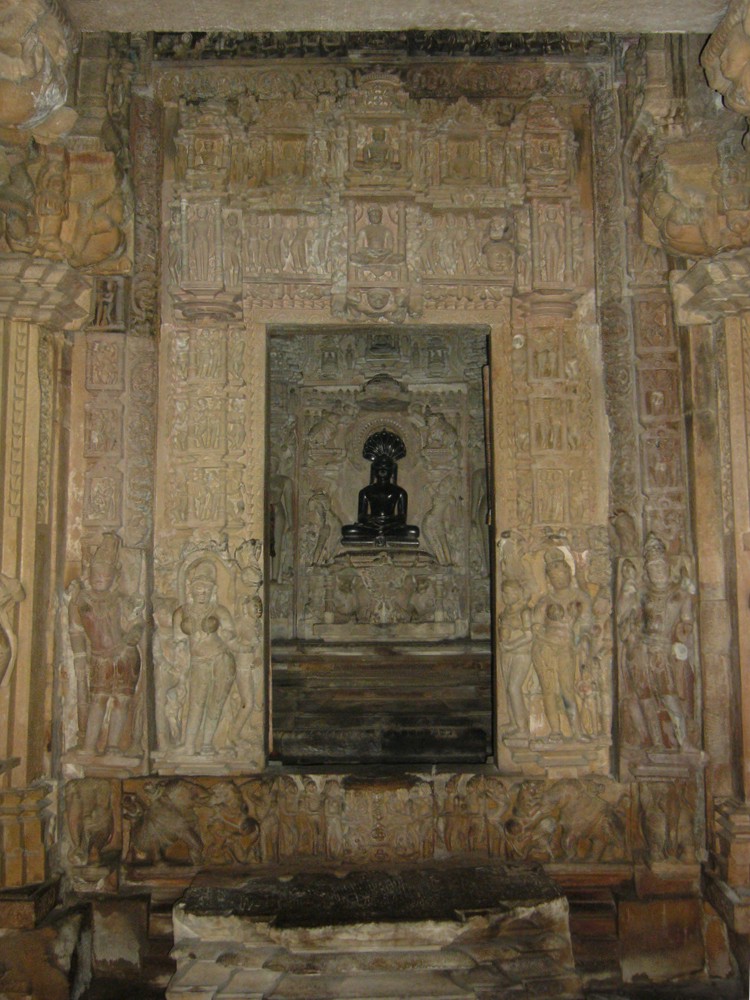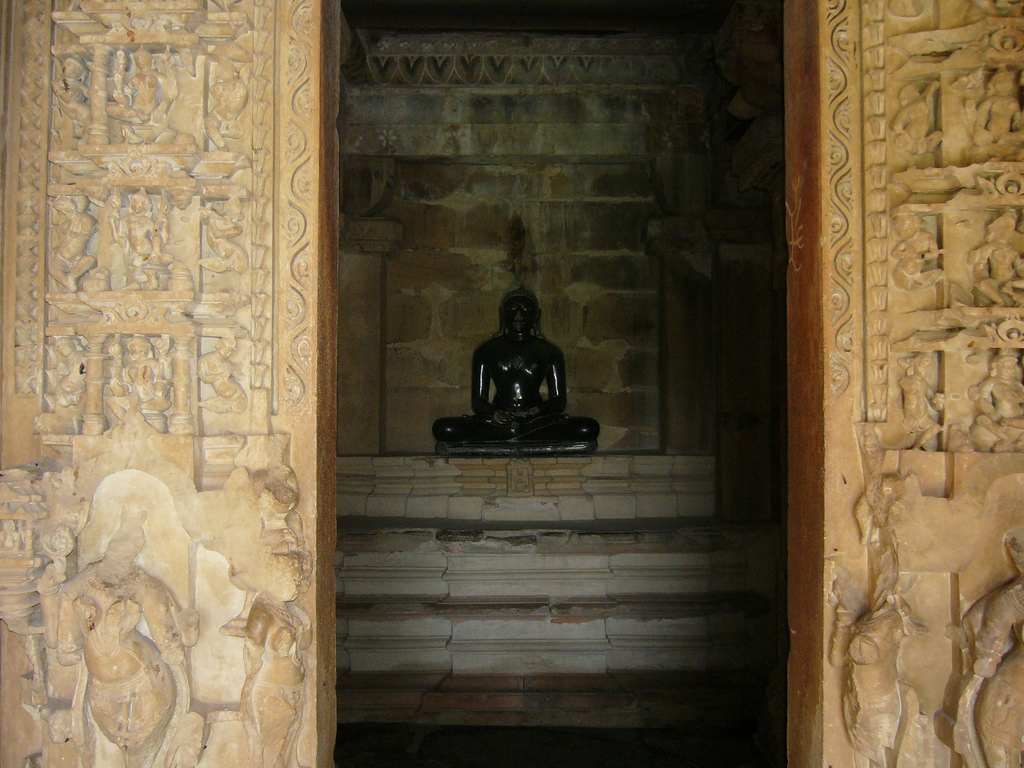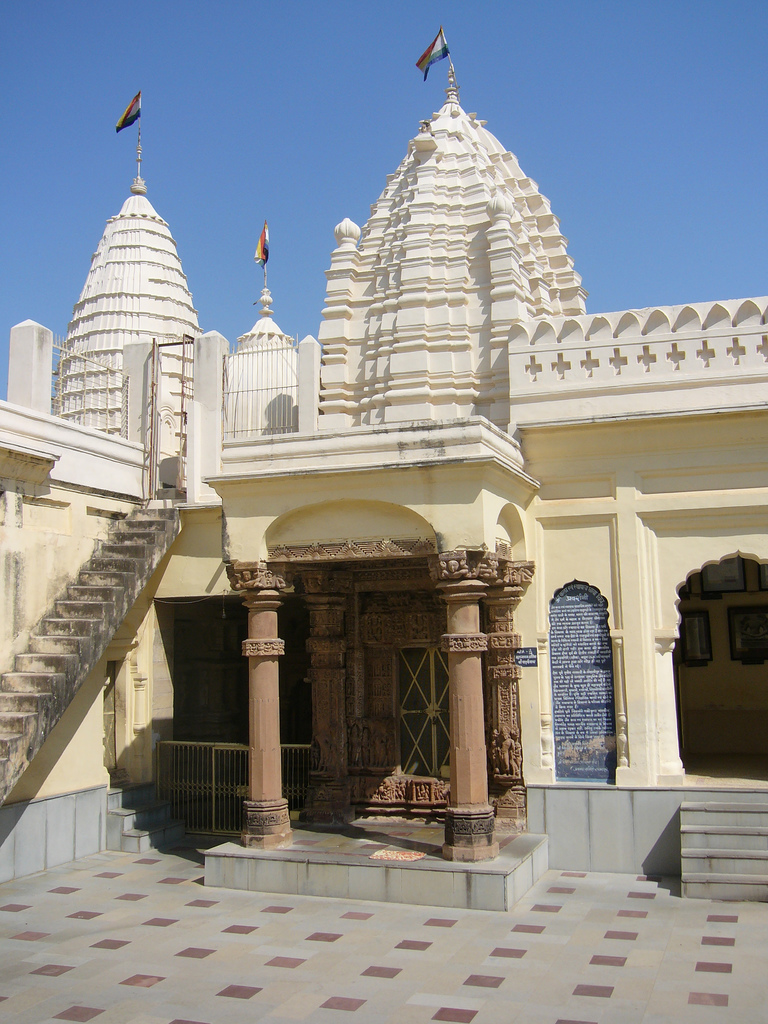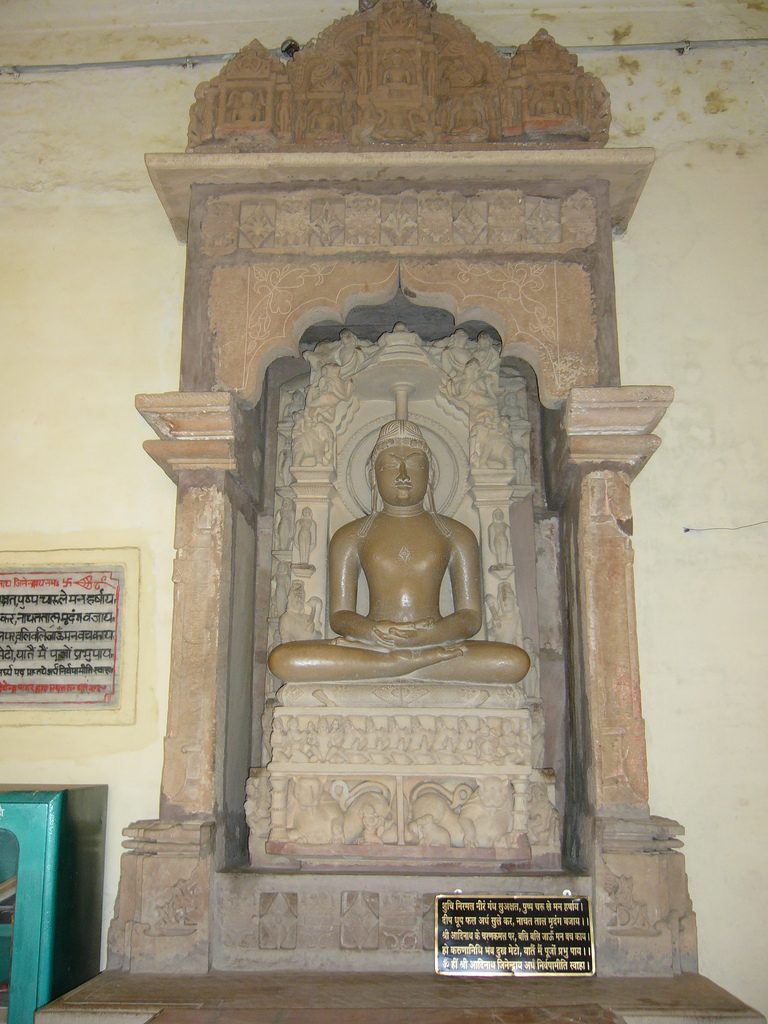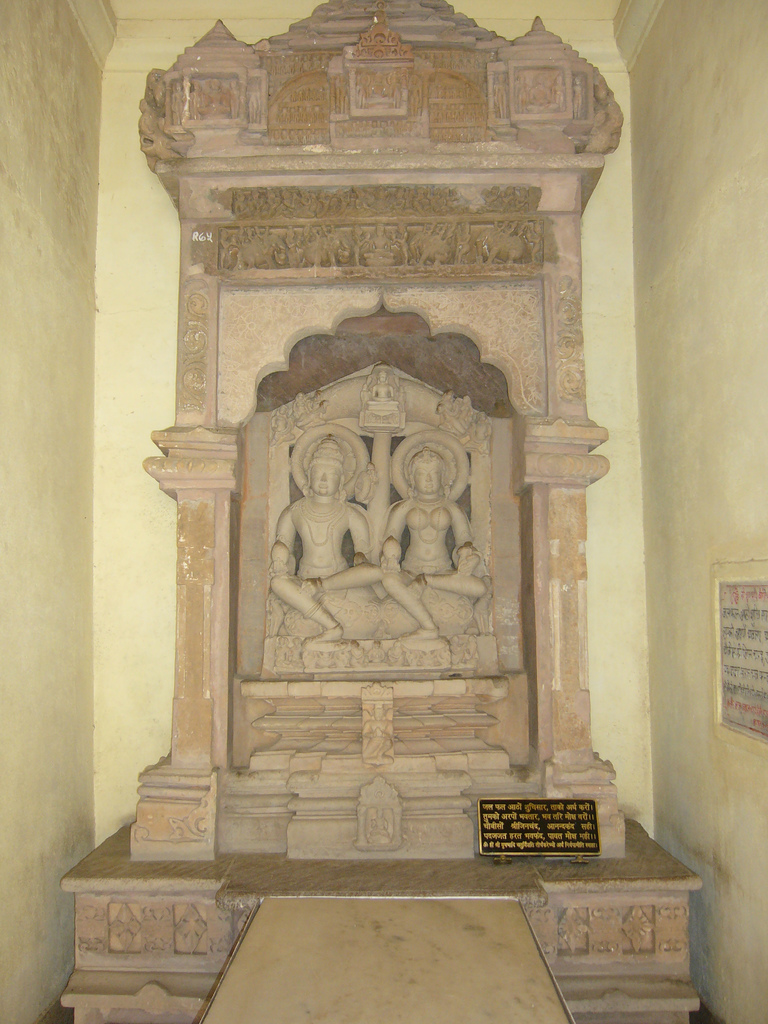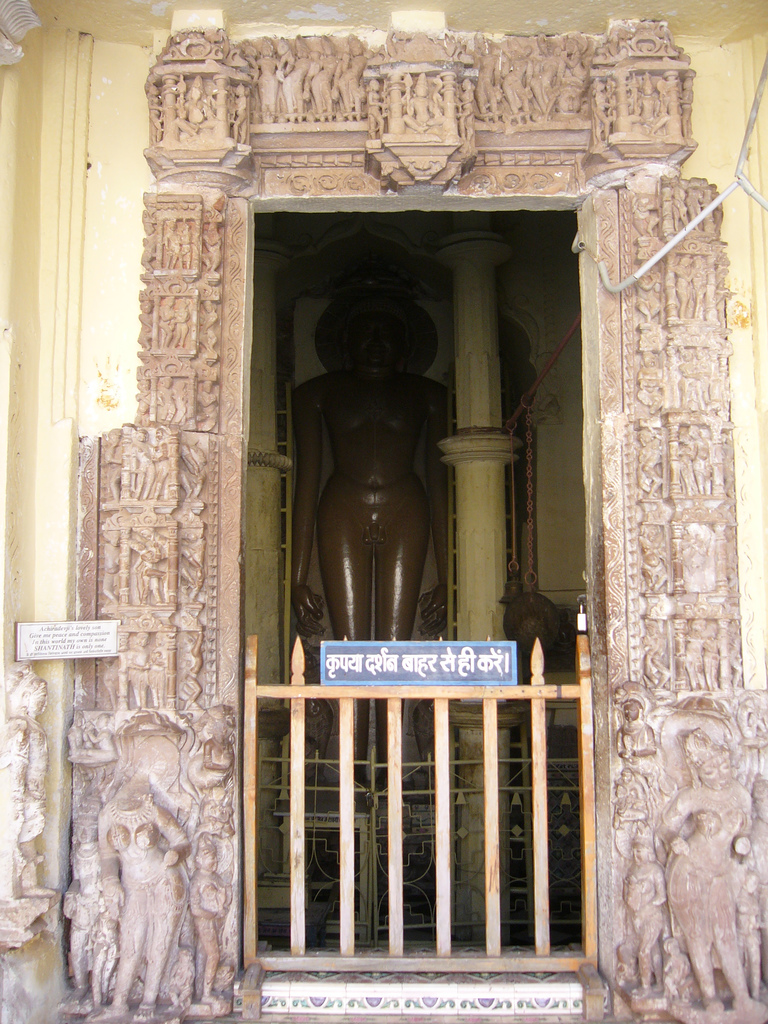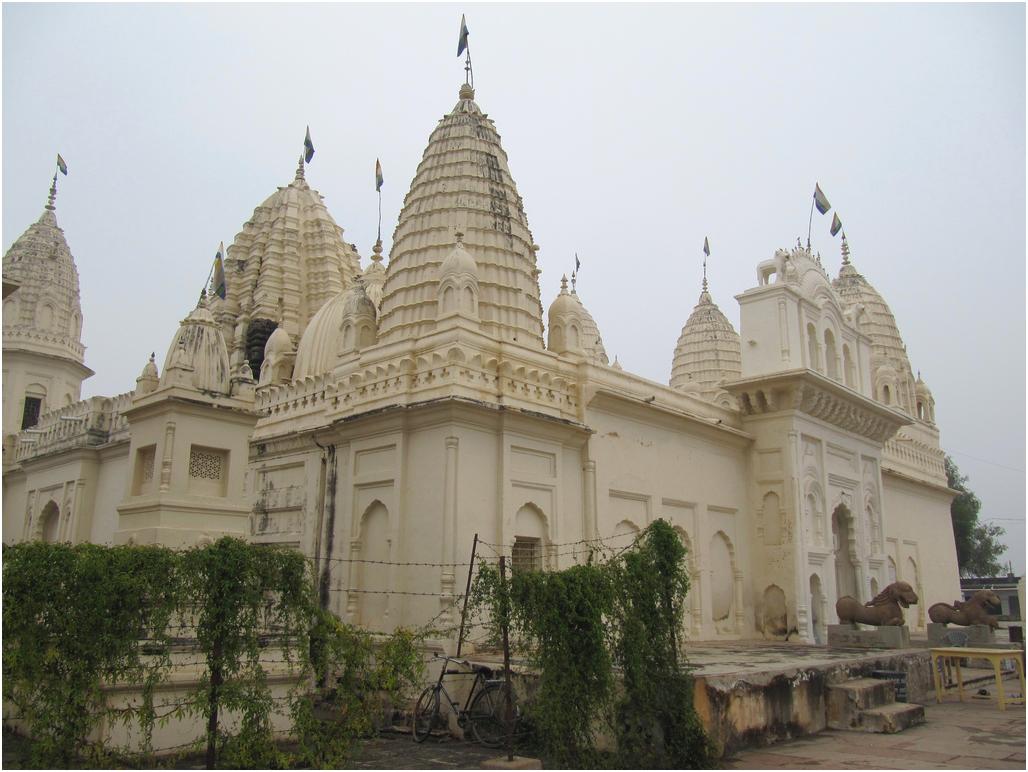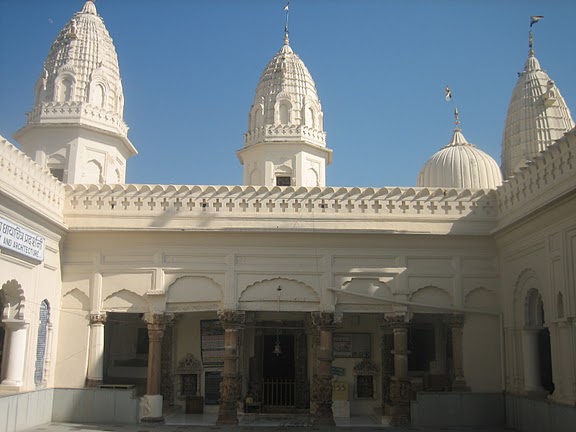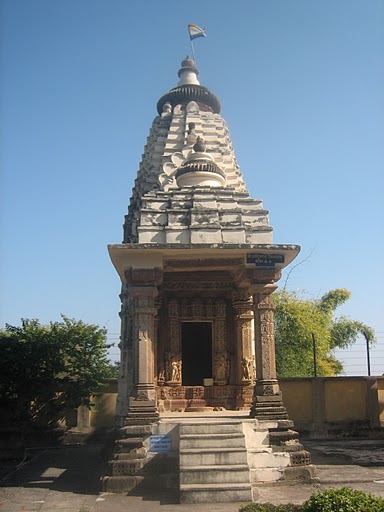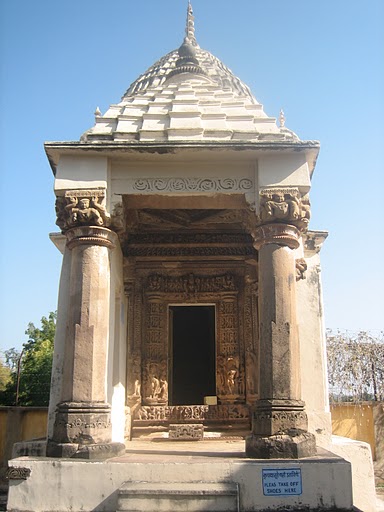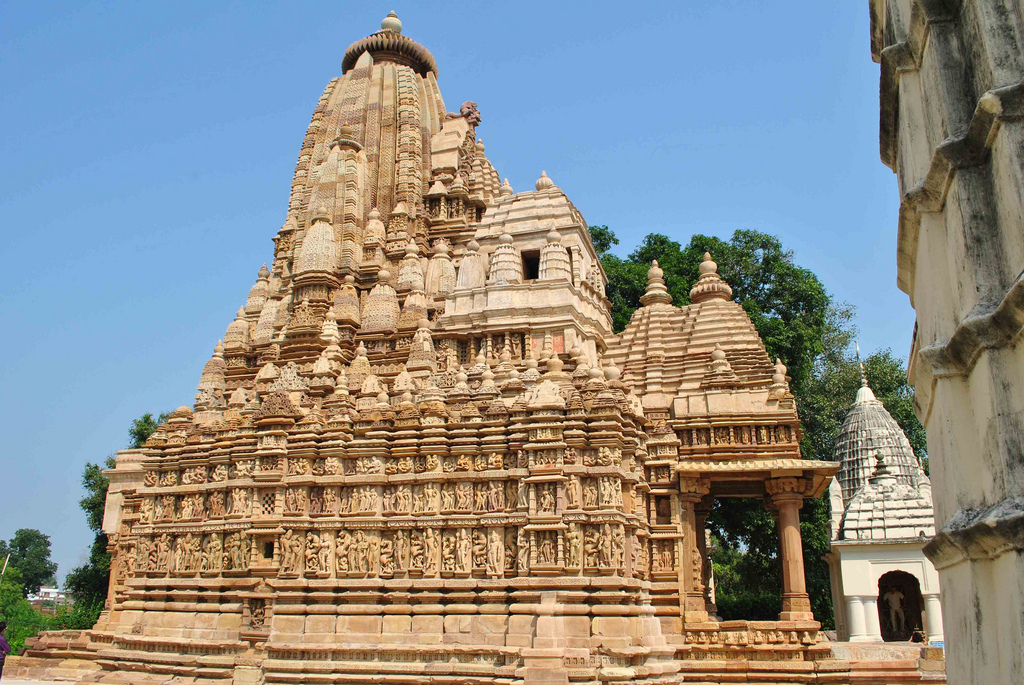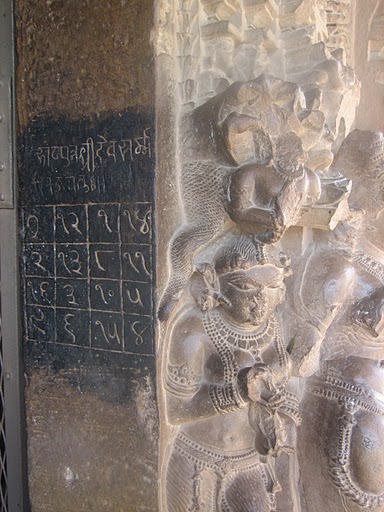Jain Temples at Khajuraho
During the Chandella rule many towns in Bundelkhand, including Khajuraho, were home of large and flourishing Jain communities. At Khajuraho the Jains apparently lived on the east side of the town. A number of Jain temples from that period have survived in this part of Khajuraho in various states of preservation. The name Khajuraho, ancient "Kharjuravāhaka", is derived from the Sanskrit words kharjura, which means "date palm" and vāhaka, which denotes "one who carries".
All Jain temples of the Khajuraho site are now enclosed within a compound wall, constructed in early 20th century, with the exception of the Ghantai temple. Of the Jain buildings mainly three temples are of special art historical interest:
- Parshvanath temple contains an inscription of 954 CE of builder Pahil, mentioning donation of gardens and requesting future generations to safeguard the temple. It mentions Chandella Dhanga as the reigning king.
- Adinath Temple contains an idol with an inscription dated Samvat 1215 during the rule of Chandella king Madanavarman.
- Shantinath Temple is a modern composite structure that incorporates sections of several temples. It has several shrines. The main section has a idol of Lord Shantinath with an inscription of Samvat 1085.
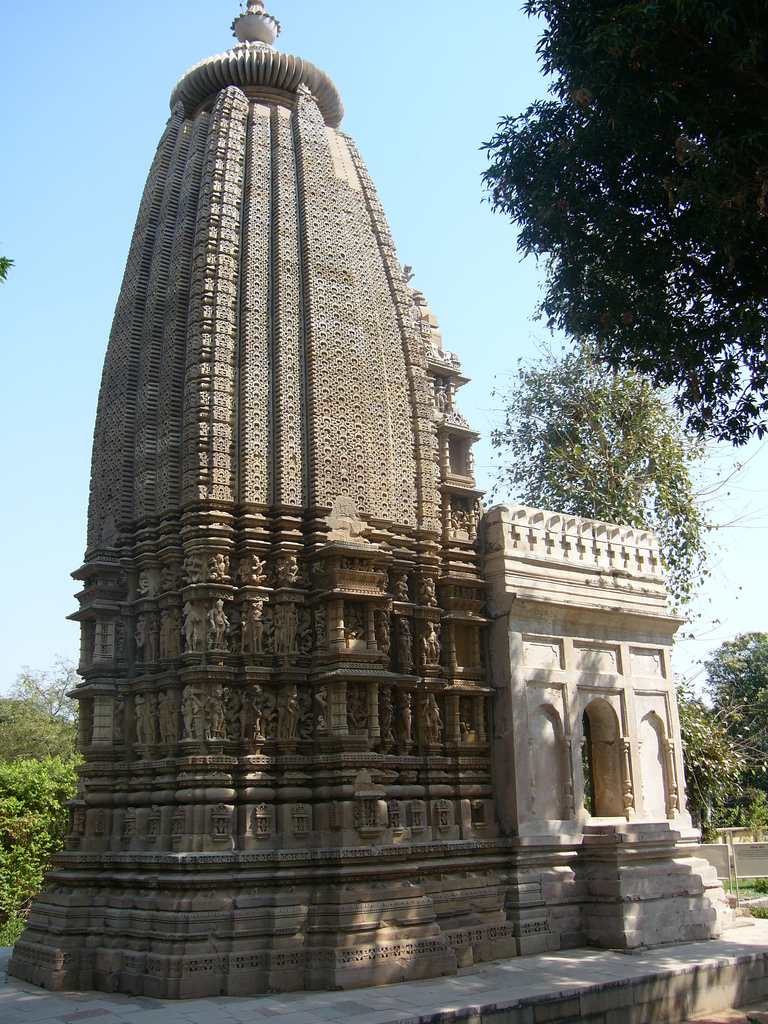
Adinath Temple
The Jaina Gazette in its April/May issue of 1948 (Volume XLV, No. 4 and 5, pp. 37-38) published a describing by an anonymous visitor of the site of Khajuraho. As a document of contemporary history, this paper portrays the impression which the architecture and the statuary of the temple site makes on a visitor of this time:
"In March last, I had the pleasure of visiting the ancient temples at Khajuraho [In the paper the name of the place is mentioned as “Khajuraha”, Editors HN4U].
From the 9th to the 13th century, Khajuraho had been the capital of the Chandella dynasty of Rajputs. Now it is a flourishing village, within the Chhatarpur State, 34 miles from Mahoba which is a station on Jhansi-Manikpur branch of the G.I.P. Railway.
Shantinath Temple
There are 31 Jain temples, situated within a walled enclosure with a high and broad gateway. Within the enclosure is a double-storied dharamshala, baoli, and a well with sweet water, a spacious stone platform, and ample vacant land with shady trees. Besides the 31 temples there is a pandukshila. The majority of the temples contain several vedis, with several images in each vedi. A few images are 7-9 feet high and in a standing posture. Some of the images have yakshas, yakshanis and other minor gods and goddesses carved around them.
These temples and about a score of others are very similar in external appearance. Rising in a regular gradation from the low roof of the portico to the high spire above the sanctum, they produce an effect of graceful symmetry. In beauty of outline and richness of carving, the temples at Khajuraho are unsurpassed by any kindred group of monuments in India.
Shri Adinath Jinalaya
The external sculptures are remarkable for the great variety of subjects portrayed. The figure of a beast resembling a lion, in some respects, is very low frequently carved in. The lion is shown as being attacked, in some places by a man, and in other places by a woman. In some places a child is riding on the back of the lion, in others a child is mounting on its breast, and in some a child is putting a lance in the lion's mouth. In some places a woman is catching the tail of the lion, and in other places a woman is attacking the lion with a spear. Processions of elephants, horses, armed warriors and dancing girls are numerous.
On a wall outside a temple, near which is fixed an enameled tablet declaring the place to be a "protected monument" there are numerous nude figures of man and woman in various modes of obscenity and copulation. These obscene figures very much resemble those on the outside of the temple of Jagannath at Puri and at Bhuvanesawar, which are of human size. The figures at Khajuraho are, however, small in dimension. I have found many such obscene figures in a temple on the banks of the Ganga at Benares, called Nepali-Khapra.
Near the last mentioned temple, there is a colossal statue of the boar varaha-avatara measuring 8 ft. 9 in. in length and 5 ft. 9 in. in height, carved out of a single block of stone. The boar is covered over the body, head and legs with a multiplicity of figures of Hindu gods and goddesses, including Brahma, Vishnu, Shiva, Surya, Saraswati, Ganga, Nagdevas, Gandharvas, Dikpalas and Navagrahas, i.e. the nine planets. On the pedestal beneath, the boar is a long and sinuous figure of a serpent.
Parshvanath Temple
In several temples I noticed that the wall of the innermost chamber, the holy of holiest, was conspicuously bare and vacant, and it appeared that something had been removed therefrom. In one temple I noticed a Jain image in padmasana attitude.
Considering the number and situation of the temples at Khajuraho, I think that they were all built by a Jain ruler. Subsequently the Jain images installed in temples were removed from the grabha-griha, the holy of holiest, the wall containing them was left bare and other emblems placed there. It appears that in the medieval period of Indian history, the Vamamarga cult had obtained ascendency in Orissa, and it spread on to the west and north of India; and was prominently in evidence on the temples at Khajuraho. The sculptors of the period also took a fancy in carving nude obscene figures; and they did so in places where such figures would be improper, in such a manner, that the figures may pass unnoticed. The temples at Khajuraho present a profitable subject for archaeological and antiquarian research."
Magic square, reffering to Chautisa Yantra, from doorway of Parshvanath Temple
Impressions from Jain Temples at Khajuraho (photos by Leon Meerson)
